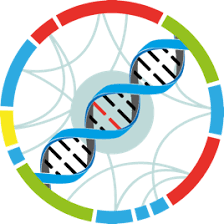Study : Salt-responsive genes are differentially regulated at the chromatin level between the leaf and root tissues in rice [RNA-Seq]
Identification
Name
Salt-responsive genes are differentially regulated at the chromatin level between the leaf and root tissues in rice [RNA-Seq]
Identifier
dXJuOkVWQS9zdHVkeS9QUkpOQTQzMTUzOQ==
Description
To elucidate the epigenetic regulation of salt-responsive genes helps to understand the underlying mechanisms that confer salt tolerance in rice. However, it is still largely unknown how epigenetic mechanisms function in regulating the salt-responsive genes in rice and other crops at a global level. In this study, we mainly focused on dynamic changes in transcriptome and histone marks between rice leaf and root tissues during salt treatment by using RNA-seq and ChIP-seq approaches. We demonstrated that the majority of salt-related differentially expressed genes (DEGs) display tissue-dependent changes. Similarly, tissue-dependent chromatin changes have been detected between leaf and root tissues during salt treatment. Most importantly, our study indicates that chromatin states with a combination of marks, rather than an individual mark, most likely play crucial roles in regulating differential expression of salt-responsive genes between leaf and root tissues. Especially, a special CS containing bivalent marks, H3K4me3 and H3K27me3 with a functional exclusion with each other, displays distinct functions in regulating expression of DEGs between leaf and root tissues, H3K27me3-related repressive mark mainly regulates expression of DEGs in root, but H3K4me3-releated active mark dominantly functions in regulation of down-regulated genes and possibly antagonize the repressive role of H3K27me3 in up-regulated genes in leaf. Thus, our findings indicate salt-responsive genes are differentially regulated at the chromatin level between the leaf and root tissues in rice, which provides new insights in the understanding of chromatin-based epigenetic mechanisms that confer salt tolerance in plants. Overall design: mRNA profiles of two-week old leaf and root of rice were generated by deep sequencing, in duplicate, using Illumina Hiseq2500 platform
Genotype
| Accession number | Name | Taxon |
|---|
